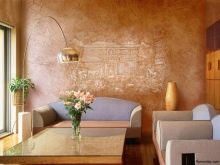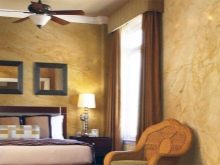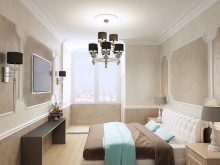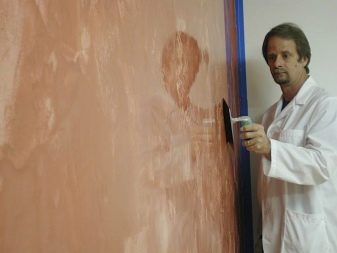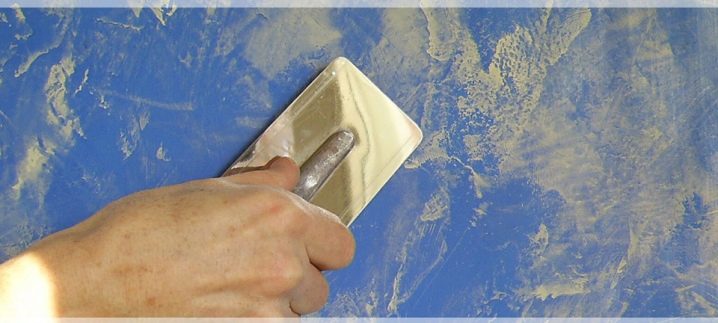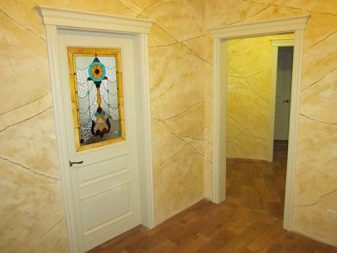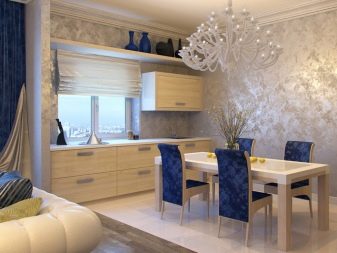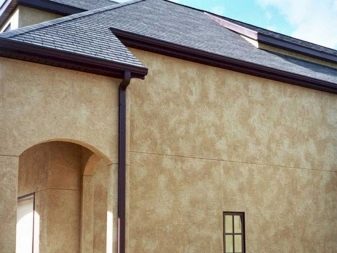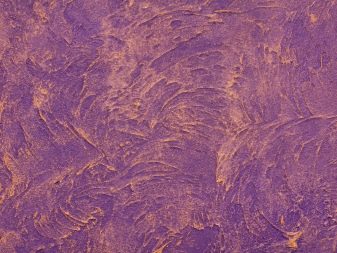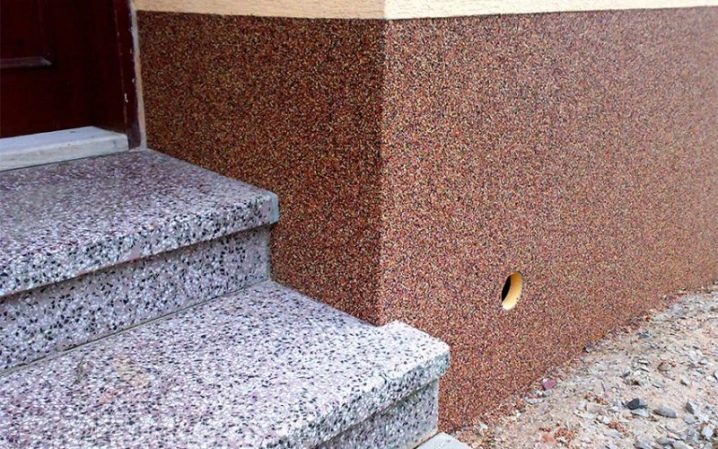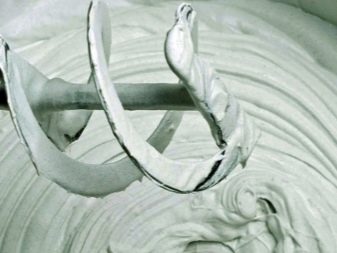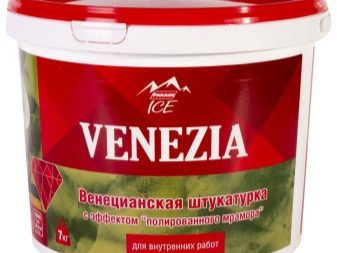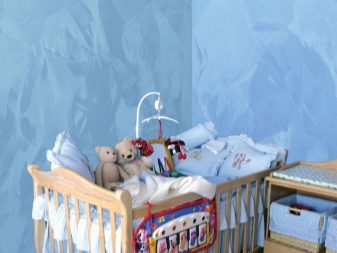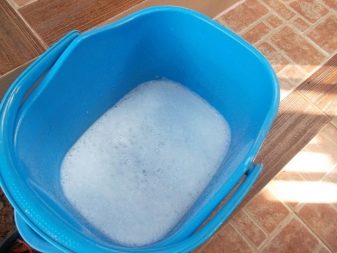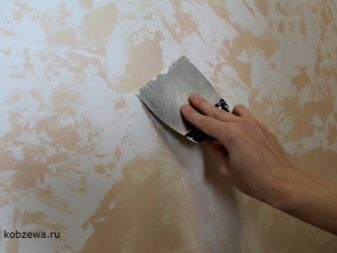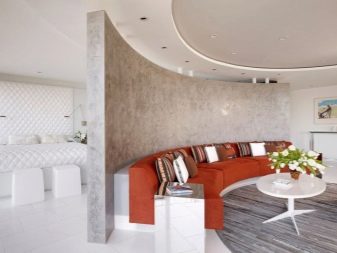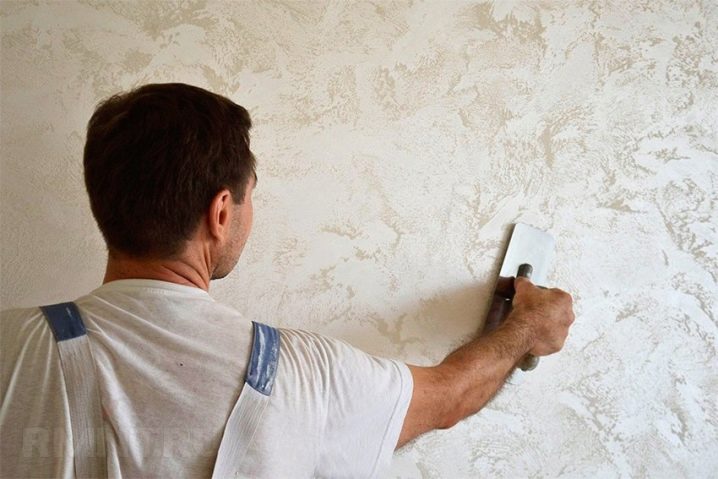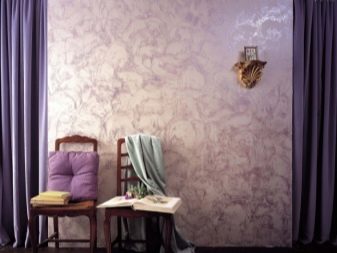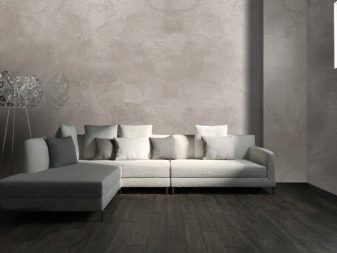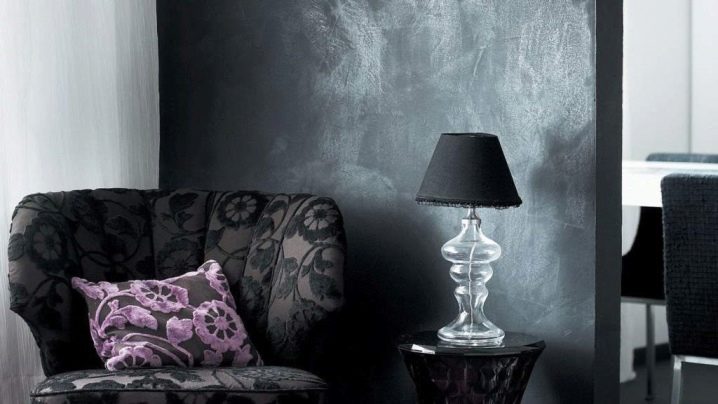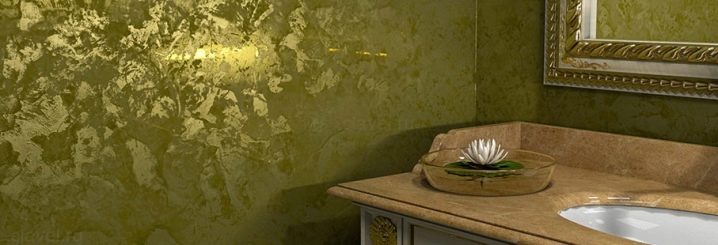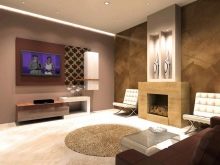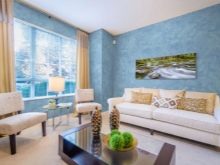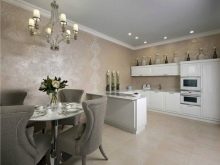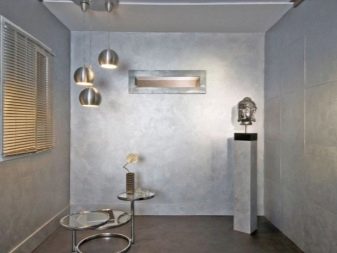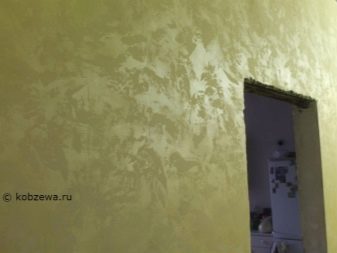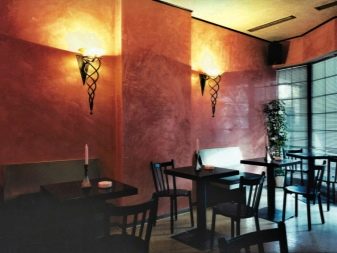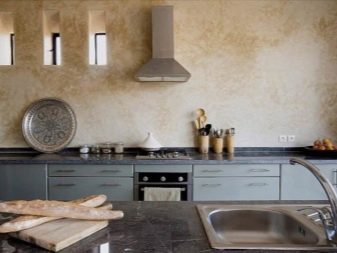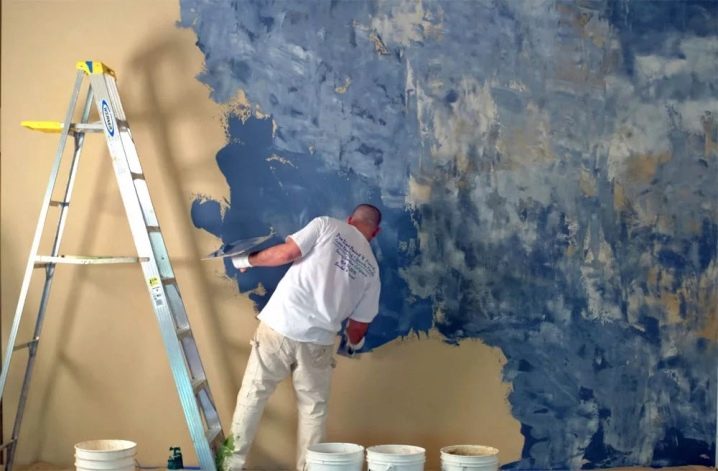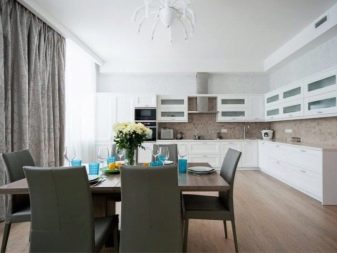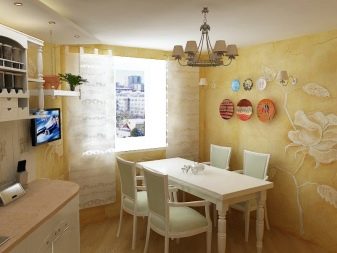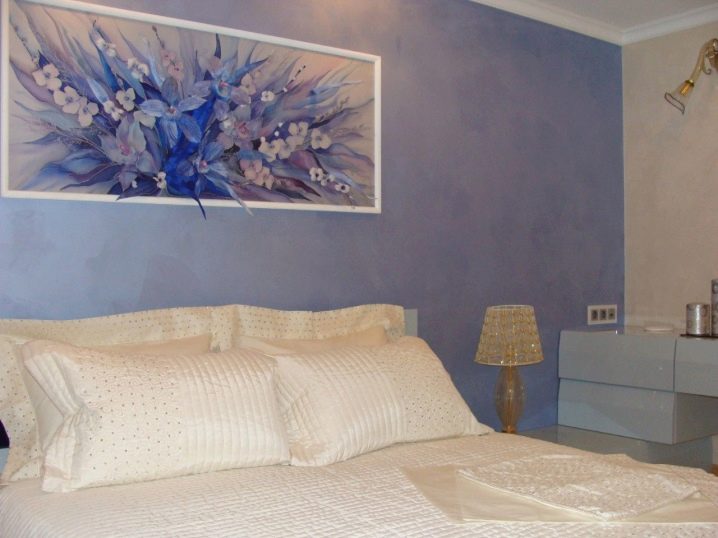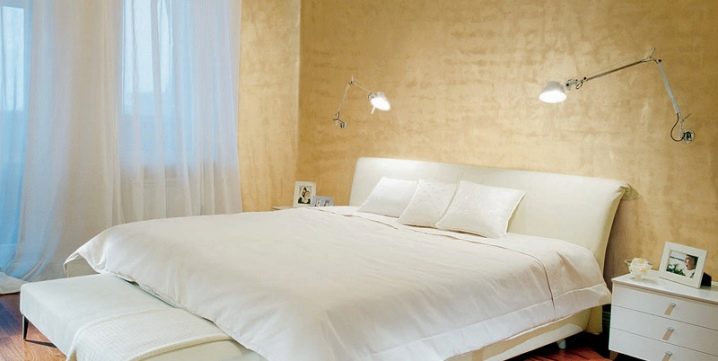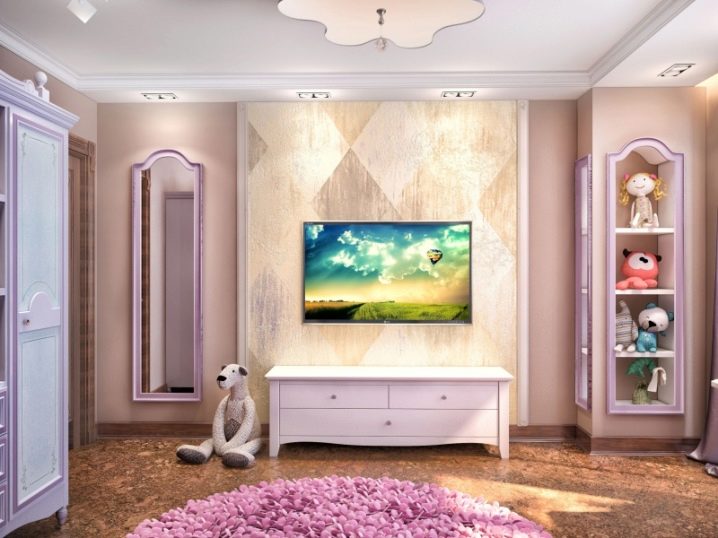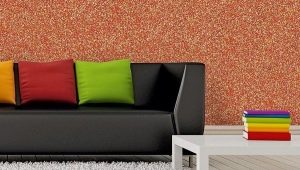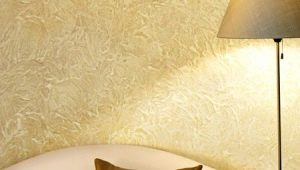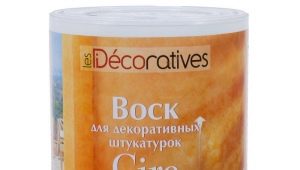Venetian plaster in the interior
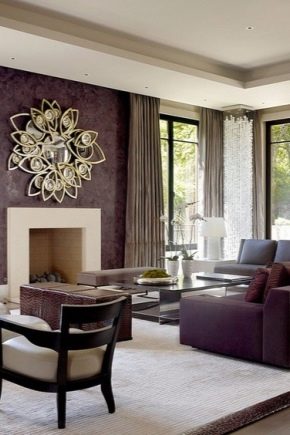
The original option for finishing the walls in the apartment or private house is Venetian plaster. But in order to use it correctly, it is necessary to become familiar with the characteristics of the composition of the mixture and find out for what purposes it is used.
Features of the composition
In appearance, Venetian plaster is a translucent layer on which the play of light rays. For the use of such building materials, it is necessary to observe one main condition, which is that it is possible to put weight only on ideally equal surface.
Originally, such plaster was used as a base for painting or fresco, or as a finishing material for palaces and churches.The first idea to restore the recipe for the manufacture of Venetian plaster belongs to Andrea Palladio, who expressed it at the end of the XVI century.
In the past, marble, granite or other natural stones were used in Venetian plaster. Lime was used as a binder with the addition of animal blood, bile and plant juices.
Modern components
The composition of Venetian plaster includes:
- small solid particles of the material - the crumb is obtained from marble, onyx, granite, limestone, malachite;
- substance for ligament;
- coloring pigments.
In addition, modern manufacturers have added wax to the Venetian, which is applied at the final stage of finishing work. Wax gives a special beauty and depth to the image. Also, manufacturers have changed the technology of production of royal plaster. Natural natural components of the mixture are now replaced by artificial ones (polymers, synthetic additives).
A number of components are used as connecting elements:
- Acrylic resin - It is a chemical substance, the basis of which is a polymer, which results in the elasticity of the mixture.It is better to apply plaster on the basis of acrylic resin on the walls of rooms in which the sun's rays fall less on the surface covered with plaster. Under the influence of ultraviolet rays, the appearance of a Venetian woman may change.
- Minerals Mineral-based plaster products use cement as a binding element. Such plaster has only light shades. High wear resistance of the coating allows it to be applied in kitchens and hallways.
- Silicone. Often, the plaster is made on the basis of silicone, because this ingredient is resistant to external influences. Sometimes Venetian plaster on a silicone basis is used to finish the facades of buildings. The only disadvantage of such a product is the high price of the material.
- Silicates. In the people, this component is called liquid glass. This coating composition allows use in areas with high moisture and with sudden temperature changes (bathroom, bath, kitchen).
Particles of the filler are made of natural stones, but the degree of grinding may differ significantly. Effectively looks plaster with very small particles.Plaster mix with a crumb has the most dense and high-quality coating. Giving color is done with dyes.
The technology of creating plaster is as follows:
- the necessary quantity of the main components is mixed - a filler and pigments;
- binder is added in a certain proportion, resulting in a mixture, the consistency of which resembles liquid sour cream.
The finished mixture is available in containers from 7 to 25 kg.
Advantages and disadvantages
Due to the specific composition of the use of Venetian plaster has its advantages:
- high moisture resistance;
- long operational life due to the strength of the composition - unlike the usual plaster, the Venetian will serve several times longer, because its minimum service life is 15 years;
- care for Venetian plaster does not require special efforts and special tools - ordinary soap solutions are used for washing the coating;
- Venetian plaster is an environmentally friendly material with no specific smell, which does not harm health, therefore, such plaster often make out the walls in the children's room;
- high resistance to fire;
- there is a possibility of repainting the coating in any shade, you can also glue the wallpaper over the plaster without first removing it from the surface;
- attractive appearance;
- Venetian plaster is a universal coating - it can be applied on a wooden, brick, concrete surface;
- decorative mixture can mask the minor irregularities of the wall.
The main disadvantage in the application of the Venetian mixture is that it needs to be applied in several layers, and the minimum amount is two layers. To obtain a decent result, it is necessary to apply plaster in 5-7 layers. The disadvantages include the high cost of production, but the end result justifies all the resources spent.
Design variations
Modern manufacturers distinguish several varieties of Venetian plaster, which differ in the constituent elements of the product that are part of the plaster:
- Trevignano (Trevignano) - decorative marbled Venetian. This coating has a wide range of colors.To create a complex image, you must use several shades. The combination of colors allows you to create original drawings. The technology of making the mixture is based on the imitation of the cut of marble, and the appearance of the coating creates the impression of a polished marble product. It is necessary to apply a decorative mixture on the walls in several layers in order to achieve an impressive result with color overflows. This kind of decorative plaster in perfect harmony with many styles: classic, vintage, baroque.
- Encausto (Encausto). This type of plaster has a complex application technology. Originally applied special mixture Encausto Premiere with mineral elements, with which creates a textured coating. Next, apply the finish coating Encausto. Thanks to a sophisticated technique of application, an extraordinary special effect is obtained: polished marble with shiny dark patches. The appearance of the finished wall resembles a granite surface.
- Marbella (Marbella). A distinctive feature of this plaster is a matte velvety coating in which glittering streaks flow in thin streams.Plaster mix is used not only for drawing on walls, but also to decorate architectural products, due to the high elasticity of this variety.
Tierrafino (Tierrafino). Plaster coating of this type is most in demand by homeowners who love wealth and luxury. The appearance of the plaster resembles a canvas with patterns, gilded marble, traventin. The effect of transfusion of nacre is created. This kind of plaster creates an effect called “world map”, which is very much in demand among fans of royal luxury.
Color solutions
Originally decorative plaster was made under the imitation of marble. In this case, the color solutions that were focused on the shade of the imitated product were popular: emerald, white, gray, rich brown.
Currently, manufacturers make the finishing material of bright colors.which will harmonize perfectly with modern stylistic solutions: orange, chocolate, blue, violet. These colors harmonize perfectly in versatile images of the interior.
For each variation, you can use additional inserts in the form of photo wallpaper.
To create an iridescent effect, mother-of-pearl is added to the plaster. Some elements sparkle strongly, while others only give a slight flicker.
Scope of application
Venetian plaster is used only for interior decoration. For external finishing works of the building, such a coating is not suitable, because the composition of the mixture does not withstand sudden changes in temperature, regular snow and rain. Venetian can be used as a finishing material to decorate the elements of decor: the eaves, columns, elements of architecture.
Due to the fact that the plaster mixture has a relatively high resistance to moisture, it can be applied in rooms with high humidity (kitchen, bath, toilet, sauna). It is also very often applied to the walls in living rooms, halls, hallways, halls, bedrooms.
Venetian is used not only for decoration of apartments and houses, but also for the decoration of many public spaces. (hotels, restaurants, offices) that can afford to use royal plaster.
The composition of the Venetian allows for finishing work on top of materials such as brick, concrete, drywall, cement surfaces, chipboard.
It is not recommended to use the plaster mixture on metal coatings, since such materials are characterized by poor adhesion.
Beautiful examples in the interior
Living room
To create an image of the living room, you can use the most original options. To achieve a spectacular appearance of the Venetian on the walls, it is recommended to determine the choice of lighting in the room. In such a room, it is better to use monochromatic muted tones (beige, blue, gray, light blue). As decoration use paintings and drawings, but their application will require a lot of effort.
The living room, decorated in Italian style, goes well with the Venetian, which is decorated with yellow stains. For additional effect, you can decorate the walls with flowers in pots or paintings of flowers.
Kitchen
Venetian plaster is often used as a finishing material in the kitchen because such a coating is easily cleaned with soap solutions. Warmer tones are used for a small room.in harmony with the interior. The areas of the walls where the sink and stove are located are best tiled. Bright flashy shades of plaster on the walls will look aggressive and unnatural.
Small rooms can be visually increased if you use a Venetian of bright colors (white, beige).
Bedroom
In the spacious bedroom you can use a variety of types of Venetian. You can apply a Venetian, imitating antique velvet with applied painting. There is also the possibility of combining various color shades that are in harmony with the interior. In small bedrooms it is not recommended to put plaster of dark colors.In this case, the room is visually reduced by several times. It is better to opt for neutral pastel colors that soothe and pacify.
If the bedroom is well illuminated by sunlight, your choice should be stopped on a plaster mixture of cold colors (blue, green). With small amounts of UV rays on the walls, experts recommend applying a Venetian with different shades of the warm spectrum: orange, burgundy, beige, pink.
Children's room
For a children's room, the design of the walls with the help of Venetian plaster is the most correct and safe variation, because such a coating does not harm health. For the nursery, it is not recommended to use saturated shades of the plaster mix (red, dark blue), since such colors negatively affect the psyche of the child. It is better to apply calm gentle tones (beige, gentle pink, blue). Additionally, you can decorate children's furniture with layers of decorative plaster.
Venetian plaster is suitable for any interior style, the main thing is to decide on the look of the mixture and the stylistic design of the room. Thanks to a large range of solutions, you can realize the most unusual and original ideas.
To learn how to make and apply Venetian plaster, see the following video.
